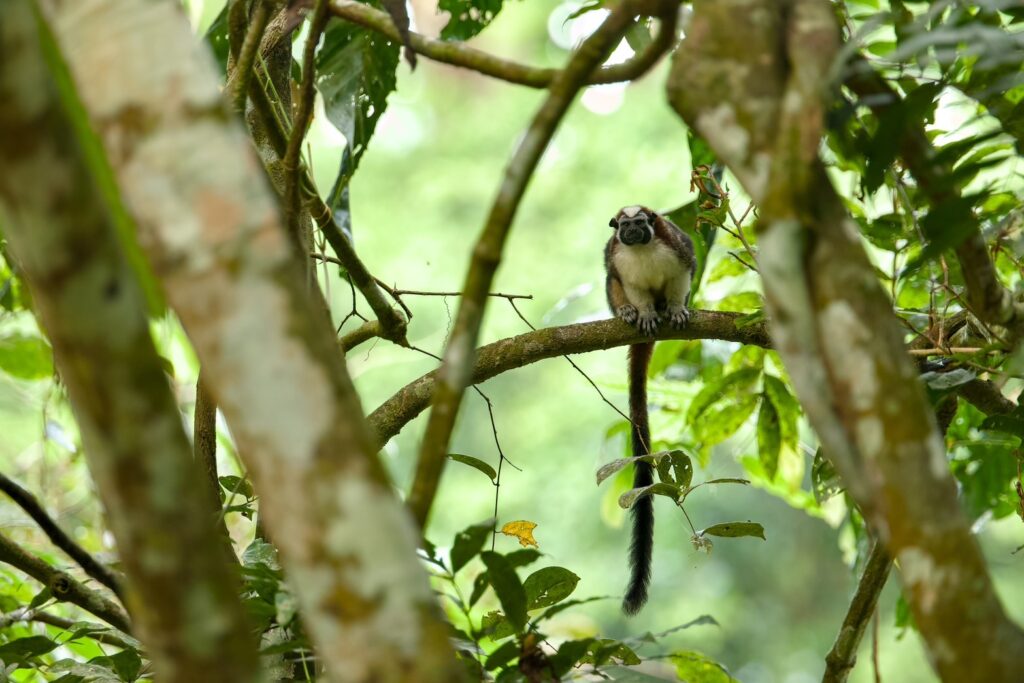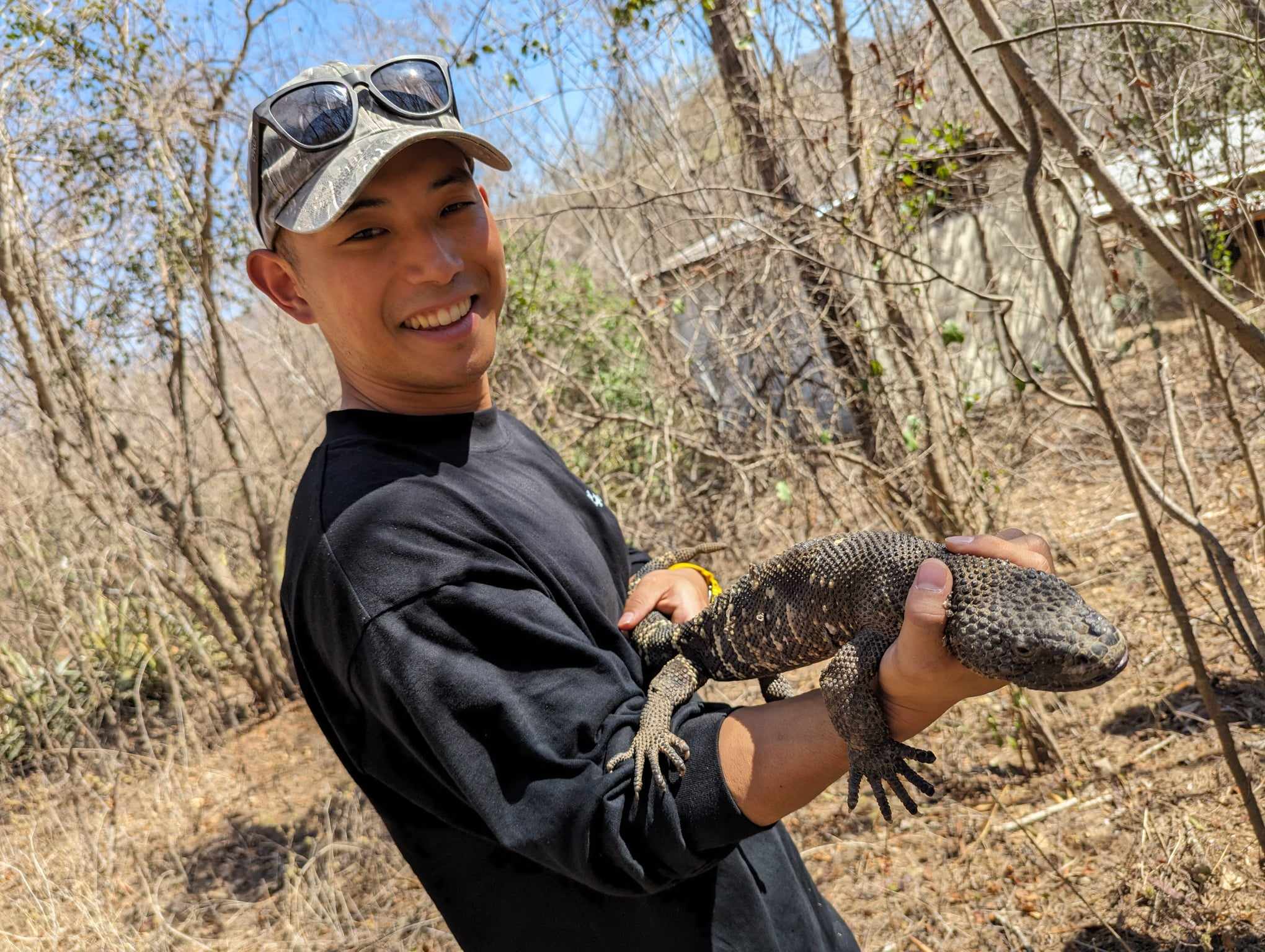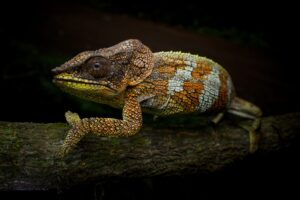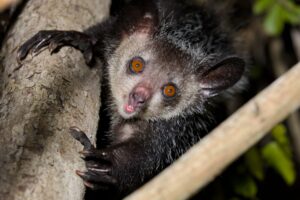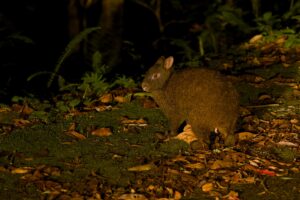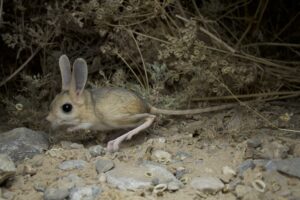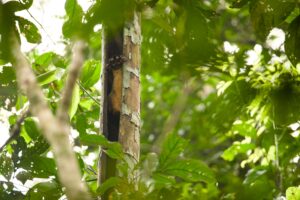Geoffroy’s tamarin (Saguinus geoffroyi), is a small primate with a distinctive appearance and highly social nature, inhabiting the lush tropical forests of Panama and Colombia. With its striking black-and-white fur, reddish-brown nape, and a long, agile tail, this species moves effortlessly through the treetops, truly resembling a masterpiece of nature.
This species primarily inhabits the forests of Panama and Colombia, adapting well to lowland tropical forests and secondary forests. However, rapid deforestation and urbanization in recent years have significantly reduced its habitat.

■ Social Structure
Geoffroy’s tamarin is one of the most social primates, typically living in small groups of 3 to 5 individuals. One particularly fascinating aspect of their social behavior is the active role males play in parenting.
Within the group, usually, only one female reproduces, often mating with multiple males in a polyandrous social structure. Once the offspring are born, the father and other males in the group take on the primary responsibility of carrying and caring for the young. This cooperative parenting system reflects the species’ strong social bonds and ensures the stability of the group.
Communication within and between groups is also highly developed. They use a variety of vocalizations and body language to convey messages—high-pitched alarm calls, friendly trills, and tail-lifting gestures associated with mating behavior all help strengthen group cohesion.
■ Diet and Ecology
Geoffroy’s tamarins are omnivorous, primarily feeding on fruits, insects, and tree sap. However, unlike marmosets, which have specialized teeth for gouging tree bark, Geoffroy’s tamarins rely on naturally occurring tree sap or sap that seeps from damaged trees.
When hunting insects, they move skillfully among small branches, quickly capturing their prey. This behavior resembles that of some species of flycatchers, and studies suggest that Geoffroy’s tamarins may use bird calls as cues to locate feeding sites.
Interestingly, they also display selective predator awareness. For example, they immediately flee when raptors approach but often remain unbothered by the presence of the Double-toothed Kite (Harpagus bidentatus), a bird that does not prey on them. This species follows tamarins, taking advantage of insects flushed out by their movement, creating a mutually beneficial relationship.
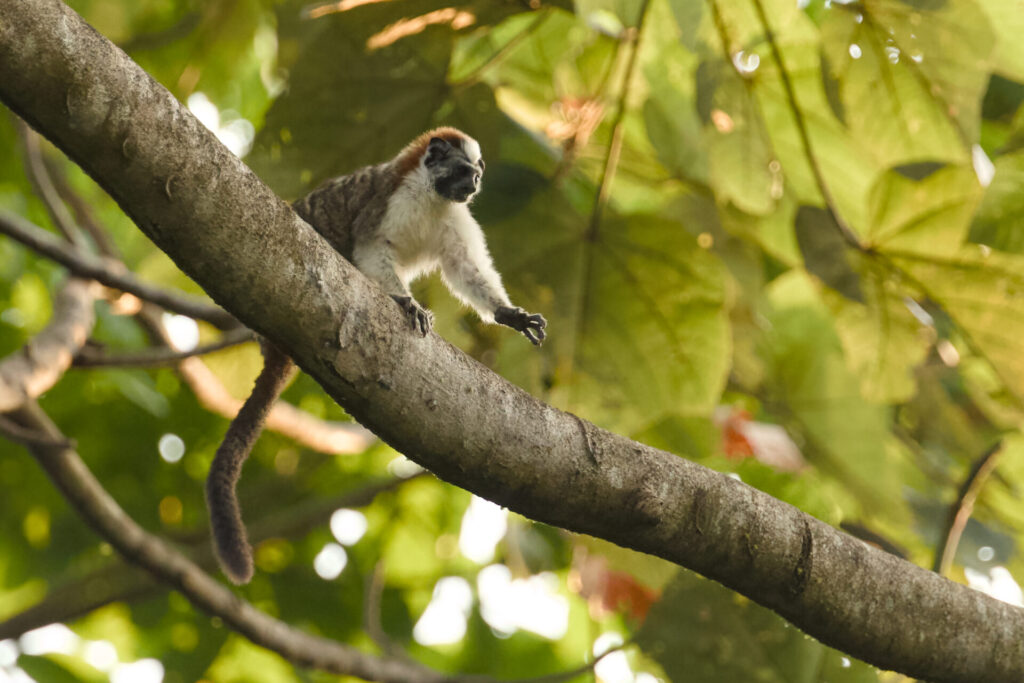
■ Conservation Status
According to the International Union for Conservation of Nature (IUCN), Geoffroy’s tamarin is currently classified as “Near Threatened”. Its limited distribution makes it inherently difficult to observe, and its colorful appearance has made it a target for illegal pet trade.
■ Conclusion
Geoffroy’s tamarin is a small yet vibrant primate with a fascinating social structure and unique ecological adaptations. Fortunately, in Panama, observing them is not particularly difficult. If you ever have the opportunity to visit their natural habitat, take the chance to witness their charm firsthand.
